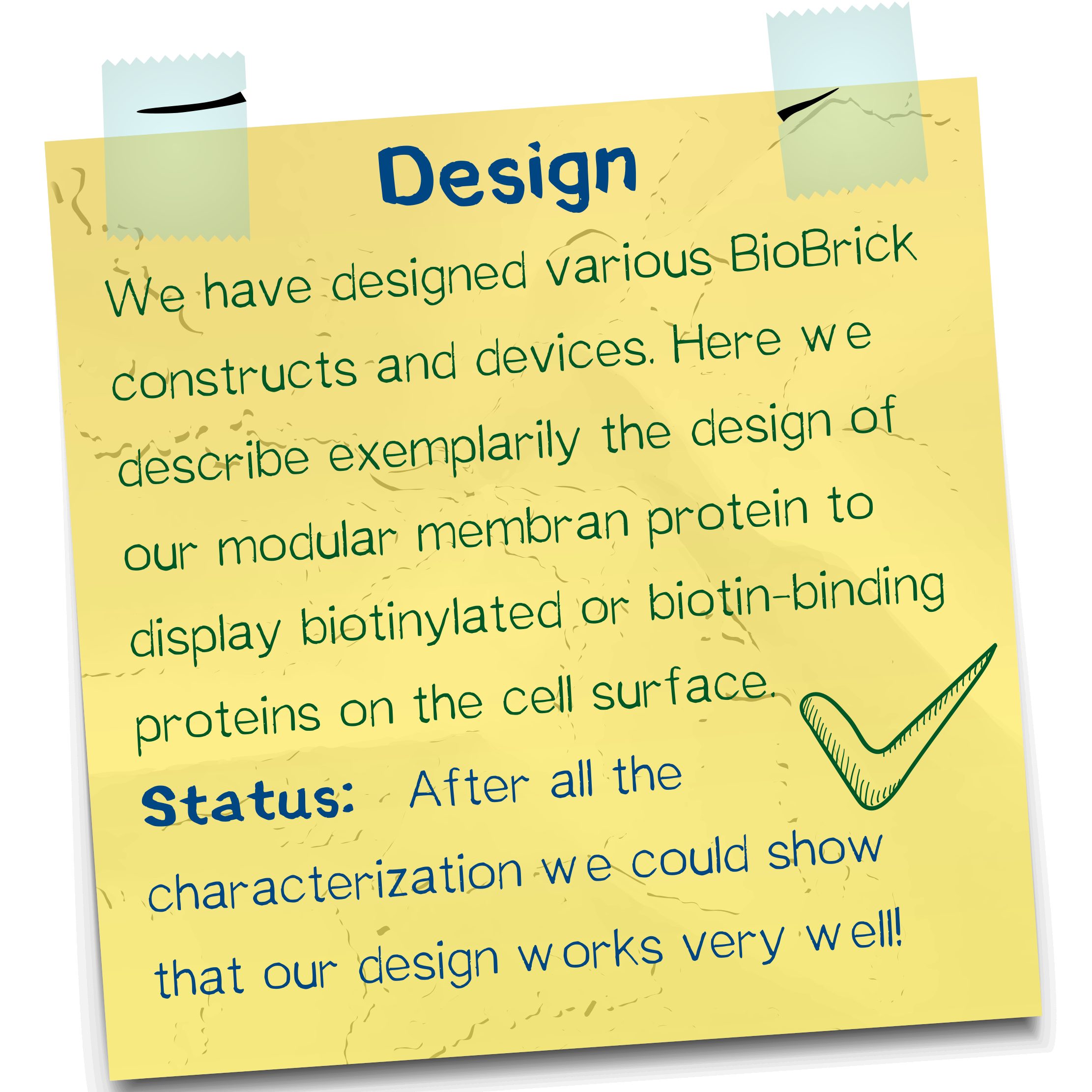(→Design of synthetic receptors presenting biotin or biotin-binding proteins) |
|||
| Line 7: | Line 7: | ||
==Design of synthetic receptors presenting biotin or biotin-binding proteins== | ==Design of synthetic receptors presenting biotin or biotin-binding proteins== | ||
[[File:Muc16 BAP vector.jpeg |thumb|right|300px| Schematic depiction of the expression vector for the BAP-based receptor as well as the corresponding biotin ligase. Shown are the CMV promoter element, the signal peptide (depending on the construct being the EGFR signal peptide, the Igκ signal peptide or the BM40 signal peptide, the latter two furthermore possessing an elongated 5’ UTR), the biotin acceptor peptide, a nanoluciferase, an epitope tag for A3C5 antibodies, the EGFR N-terminal transmembrane α-helix, mRuby, a ''Strep''-tag II, an IRES from eIF4G1 for polycistronic transcription, BirA including a Igκ signal peptide as well as an ER retention signal sequence, and the hGH polyadenylation signal sequence.]] | [[File:Muc16 BAP vector.jpeg |thumb|right|300px| Schematic depiction of the expression vector for the BAP-based receptor as well as the corresponding biotin ligase. Shown are the CMV promoter element, the signal peptide (depending on the construct being the EGFR signal peptide, the Igκ signal peptide or the BM40 signal peptide, the latter two furthermore possessing an elongated 5’ UTR), the biotin acceptor peptide, a nanoluciferase, an epitope tag for A3C5 antibodies, the EGFR N-terminal transmembrane α-helix, mRuby, a ''Strep''-tag II, an IRES from eIF4G1 for polycistronic transcription, BirA including a Igκ signal peptide as well as an ER retention signal sequence, and the hGH polyadenylation signal sequence.]] | ||
| − | The receptor we created is able to cross-link cells after injection into streptavidin solution by allowing the connection of several biotinylated cell surfaces through the tetravalent binder streptavidin. This reaction being very fast and highly affine - with a K<sub>D</sub> of 10<sup>-15</sup> M<sup>-1</sup> - allows precise positioning and cross-linking of cells | + | The receptor we created is able to cross-link cells after injection into streptavidin solution by allowing the connection of several biotinylated cell surfaces through the tetravalent binder streptavidin. This reaction being very fast and highly affine - with a K<sub>D</sub> of 10<sup>-15</sup> M<sup>-1</sup> - allows precise positioning and cross-linking of cells, making them form a stable network upon printing. For this project, we have created receptors for cross-linking of both human as well as bacterial cells. |
=References= | =References= | ||
Revision as of 23:05, 17 October 2016
Wichtiger Kommentar: Hier wird aus Rezeptordesign hinkopiert
Design
Design of synthetic receptors presenting biotin or biotin-binding proteins

Schematic depiction of the expression vector for the BAP-based receptor as well as the corresponding biotin ligase. Shown are the CMV promoter element, the signal peptide (depending on the construct being the EGFR signal peptide, the Igκ signal peptide or the BM40 signal peptide, the latter two furthermore possessing an elongated 5’ UTR), the biotin acceptor peptide, a nanoluciferase, an epitope tag for A3C5 antibodies, the EGFR N-terminal transmembrane α-helix, mRuby, a Strep-tag II, an IRES from eIF4G1 for polycistronic transcription, BirA including a Igκ signal peptide as well as an ER retention signal sequence, and the hGH polyadenylation signal sequence.
The receptor we created is able to cross-link cells after injection into streptavidin solution by allowing the connection of several biotinylated cell surfaces through the tetravalent binder streptavidin. This reaction being very fast and highly affine - with a KD of 10-15 M-1 - allows precise positioning and cross-linking of cells, making them form a stable network upon printing. For this project, we have created receptors for cross-linking of both human as well as bacterial cells.
References



